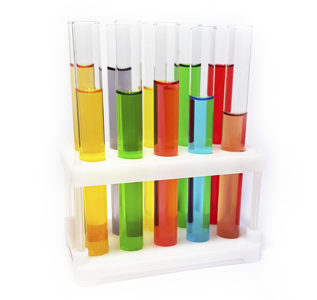Lab Test Results Interpretation Online
Complete Blood Count (CBC) Urinalysis (UA) Comprehensive Metabolic Panel (CMP) Thyroid Function Tests (TFTs) Fasting Blood Glucose TestUrine Color (COL)

What color urine is healthy?
Normal urine consists of approximately 95% water. The color of urine can serve as an indicator of whether you are drinking enough water or not. The daily need for water is very individual and depends on many factors: body composition and size, diet, physical activity, environment, diseases, etc.). Urine color determination can be very useful in assessing the adequacy of fluid intake.
If enough water is being taken, the urine can be nearly colorless or has a straw color. A darker yellow urine often means that a person may be dehydrated.
Interpret now "Complete Blood Count (CBC)"
Interpret now "Comprehensive Metabolic Panel (CMP)"
Urine color may be indicative of kidney disorders. Evaluate the color of your urine by viewing the sample put in a clear container against a white background with the aid of a good light source.
The urine color of a healthy person ranges from pale straw yellow to amber yellow. Urine color depends on the substances formed from pigments found in blood (urohematin, hematoporphyrin, urochromes, etc.).
Urine may have an unusual color. The shade of your urine depends on the amount of water you drink. The more you drink, the lighter your urine. The less you drink, the darker and more concentrated your urine. Urine color may be changed by vitamins, medications or some foods (beets, carrots).
What does color of urine mean?
Generally, changes in urine color are temporary and have no serious consequences. However, sometimes such changes may be caused by an infection or another severe disease.
The most frequent changes in urine color than are not caused by a disease:
- Pink or red: beetroot, blackberries, rhubarb; phenolphthalein, propofol, rifampicin, laxatives containing senna
- Brown: fava beans, rhubarb; levodopa, metronidazole, nitrofurantoin, some anti-malarial agents, methyldopa, laxatives containing cascara or senna
- Dark yellow or orange: carrots; rifampicin, sulfasalazine, the B vitamins, vitamin C
- Green or blue: asparagus; amitriptyline, cimetidine, indomethacin, promethazine, propofol, triamterene, several multi-vitamins
Some medical conditions that can change the colour of urine:
- Yellow or dark yellow : concentrated urine caused by dehydration
- Orange: a problem with the liver or bile duct
- Brown or dark brown: blood in the urine (hematuria), a liver or kidney disorder
- Green: a urinary tract infection caused by a specific pseudomonas bacteria
- Pink or red: blood in the urine (hematuria), haemoglobinuria, myoglobinuria
Urine color in pregnancy
Urine color is not changed by pregnancy. Urine is yellow in pregnancy just like it is in non-pregnant women. Bright yellow or orange urine may be seen in pregnancy due to taking prenatal vitamins on a regular basis.
During pregnancy and breastfeeding, it is important to drink enough water. Extra fluid helps to increase the total amount of water in the body, helps to compensate for the loss of water due to vomiting, and to compensate for the water secreted in breast milk.
Automatic interpretation of the urinalysis results
+ Sources
- Perrier, E.T., Johnson, E.C., McKenzie, A.L. et al. Urine colour change as an indicator of change in daily water intake: a quantitative analysis. Eur J Nutr 55, 1943–1949 (2016).
https://doi.org/10.1007/s00394-015-1010-2 - Red, brown, green: Urine colors and what they might mean. (2018)
https://www.health.harvard.edu/newsletter_article/red-brown-green-urine-colors-and-what-they-might-mean - McKenzie, A. L., Muñoz, C. X., Ellis, L. A., Perrier, E. T., Guelinckx, I., Klein, A., Kavouras, S. A., & Armstrong, L. E. (2017). Urine color as an indicator of urine concentration in pregnant and lactating women. European journal of nutrition, 56(1), 355–362.
https://doi.org/10.1007/s00394-015-1085-9